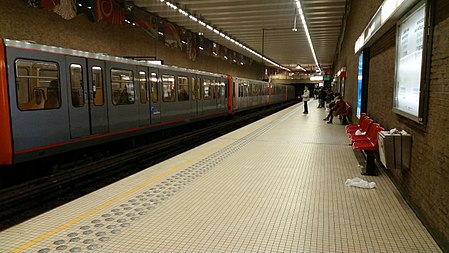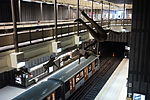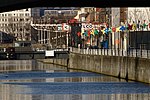Ribaucourt metro station
Belgian railway station stubsBrussels Metro stubsBrussels metro stationsMolenbeek-Saint-JeanRailway stations opened in 1988

Ribaucourt is a Brussels metro station on the northern segment of lines 2 and 6. It opened on 2 October 1988 and is located on Boulevard Léopold II/Leopold II-laan in the municipality of Molenbeek-Saint-Jean, in the western part of Brussels (Belgium). It takes its name from the Belgian noble family De Ribaucourt and De Ribaucourt park and castle.
Excerpt from the Wikipedia article Ribaucourt metro station (License: CC BY-SA 3.0, Authors, Images).Ribaucourt metro station
Tunnel Annie Cordy - Annie Cordytunnel,
Geographical coordinates (GPS) Address Nearby Places Show on map
Geographical coordinates (GPS)
| Latitude | Longitude |
|---|---|
| N 50.860555555556 ° | E 4.34 ° |
Address
Ribaucourt
Tunnel Annie Cordy - Annie Cordytunnel
1080
Belgium
Open on Google Maps











